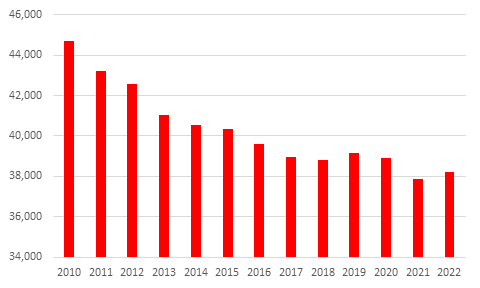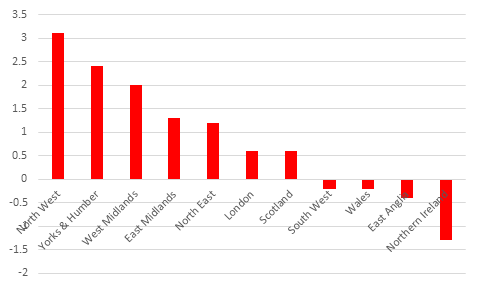26th January 2023
Over half of pubs report falling turnover and many are reducing trading hours due to staff shortages
· Over 40% of pubs have cut staff
· Pub numbers increased in 2022 despite adverse trading conditions
Over half of British pubs (58%) are reporting falling turnover and nearly a third are reducing opening hours due to staff shortages (28.6%), according to data from National Statistics commissioned by Price Bailey, the Top 30 firm of chartered accountants.
The survey of publicans, some of which operate across multiple sites, also reveals that 75% of publicans are increasing prices to cover energy costs, while 54% and 45% are looking at raising prices to cover increased raw material and labour costs respectively.
41% of publicans have cut staff over the past month while just 2% have increased their number of employees. Looking forward over the next 12 months, more than twice as many pub landlords are expecting business performance to worsen than improve – 39% compared to 16%.
Matt Howard, Head of the Insolvency and Recovery Team at Price Bailey, comments: “Pubs are facing soaring costs coupled with a squeeze on the disposable incomes of patrons. The ongoing rail strikes, which hit the pub trade hard during the peak Christmas party period, made it the third year running in which the festive season was disrupted. Unlike with Covid, landlords are not being offered compensation for the disruption, and the new Energy Bills Discount Scheme will see many pubs paying substantially more for energy from April. The next few months will be critical for the survival of many pubs.”
“Publicans are increasingly having to restrict opening hours and scale back the services they provide to customers. Not only will it become more difficult to justify opening during off-peak hours as energy costs rise but lack of staff will compel more pubs to focus on their most profitable business hours.”
Increase in the number of pubs in 2022 despite adverse trading conditions
The number of UK pubs has jumped by 360 over the past year despite rising costs and a decline in disposable income among pub-goers, according to an analysis of separate data from National Statistics by Price Bailey.
According to Price Bailey, the reversal in the long-term decline in the number of pubs is surprising and runs contrary to the prevailing narrative of a sector in long-term decline. The number of UK pubs and bars declined year-on-year from 44,680 in 2010 to 38,820 in 2018, a 13.1% decrease. The number recovered slightly in 2019, rising to 39,140, but fell back in 2020 and 2021 as lockdowns and social distancing restrictions saw many pubs shuttered. The increase in pub numbers in 2022 represents the second year of growth in 12 years. The number of pubs in the UK currently stands at 38,225.
Price Bailey says that while many large pub chains and small independent pubs are continuing to close in significant numbers, new types of pubs are thriving. Wetherspoons, the UK’s largest pub chain, recently announced plans to close and sell 39 pubs. At the same time independent craft breweries are taking advantage of the craft beer boom to open their own pubs in large numbers (BrewDog recently opened London’s biggest pub at Waterloo station) and there has been an increase in theme pubs, such as the Boom Battle Bar chain, which combines food and drink with games.
Matt Howard, Head of the Insolvency and Recovery Team at Price Bailey, comments: “A misleading narrative has taken hold that UK pub numbers are in terminal, irreversible decline. While the number of UK pubs hit a record low in 2018, we have since had two years in which pub numbers have increased and, but for the pandemic, might have had a sustained increase in pub numbers over the last four years.”
“We are not going to get back to the numbers of pubs we had a decade ago but the decline seems to have bottomed out and we have started to see a modest recovery. 2023 will be a challenging year for many pubs, which may reverse that fragile recovery.”
“This is all the more surprising in view of adverse trading conditions. Even though many of the large pub chains and independent pubs are struggling, innovative new market entrants, such as pubs owned by craft breweries, and theme pubs, such as the Boom Battle Bar chain, are successfully shaking up the industry.”

Price Bailey says that the increase in the number of UK pubs is heavily concentrated in the North of England and the Midlands with all other English regions seeing much more modest increases or continued decline. Among the other UK nations, only Scotland saw an increase in pubs in 2022.
Matt Howard comments: “The UK regions which have seen a continued decline in the number of pubs are predominantly rural with relatively low population densities. Pubs in rural areas tend to be smaller, have lower footfall, and may struggle to stay open during off peak hours as rising energy and wage costs erode already thin margins.”


